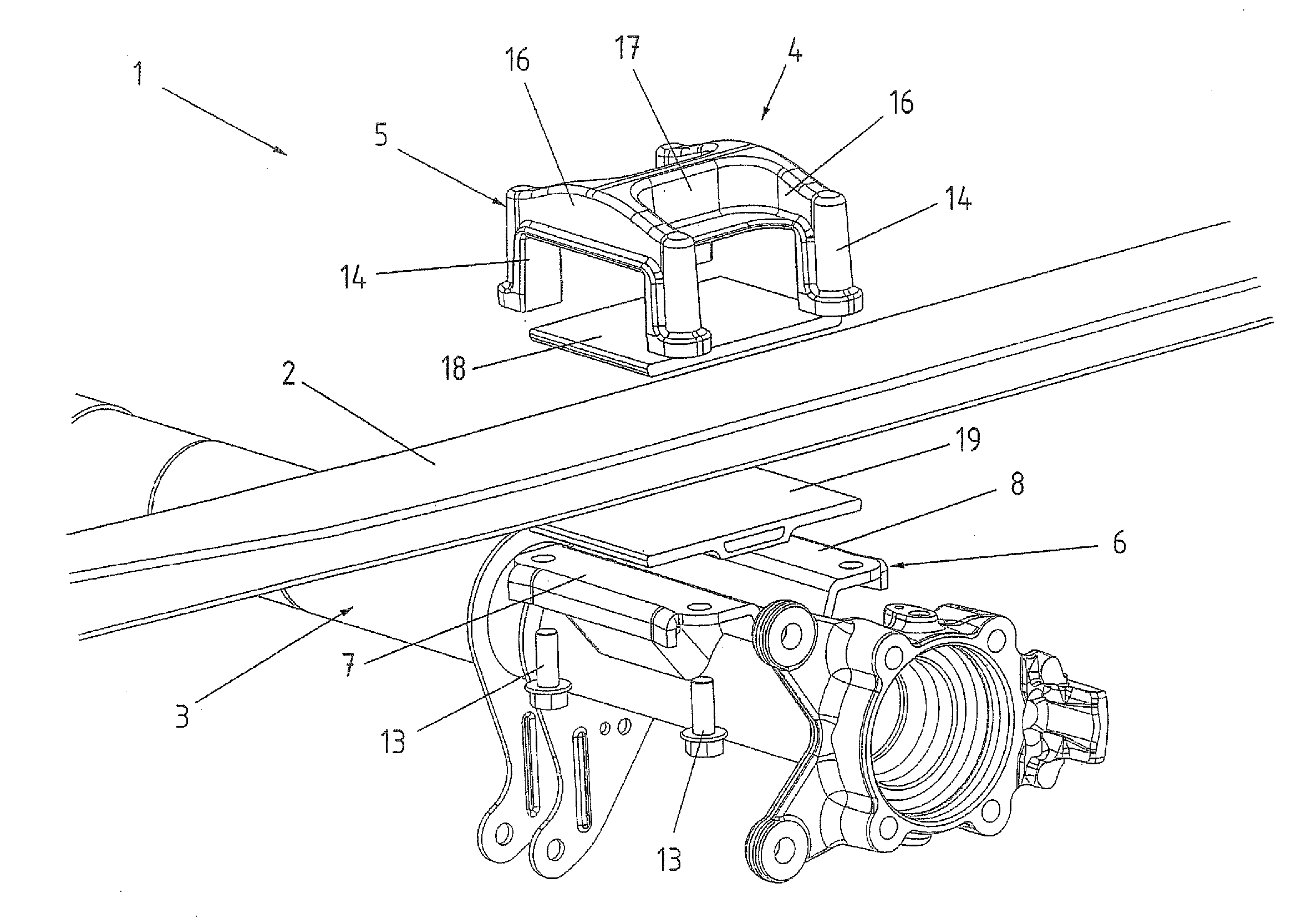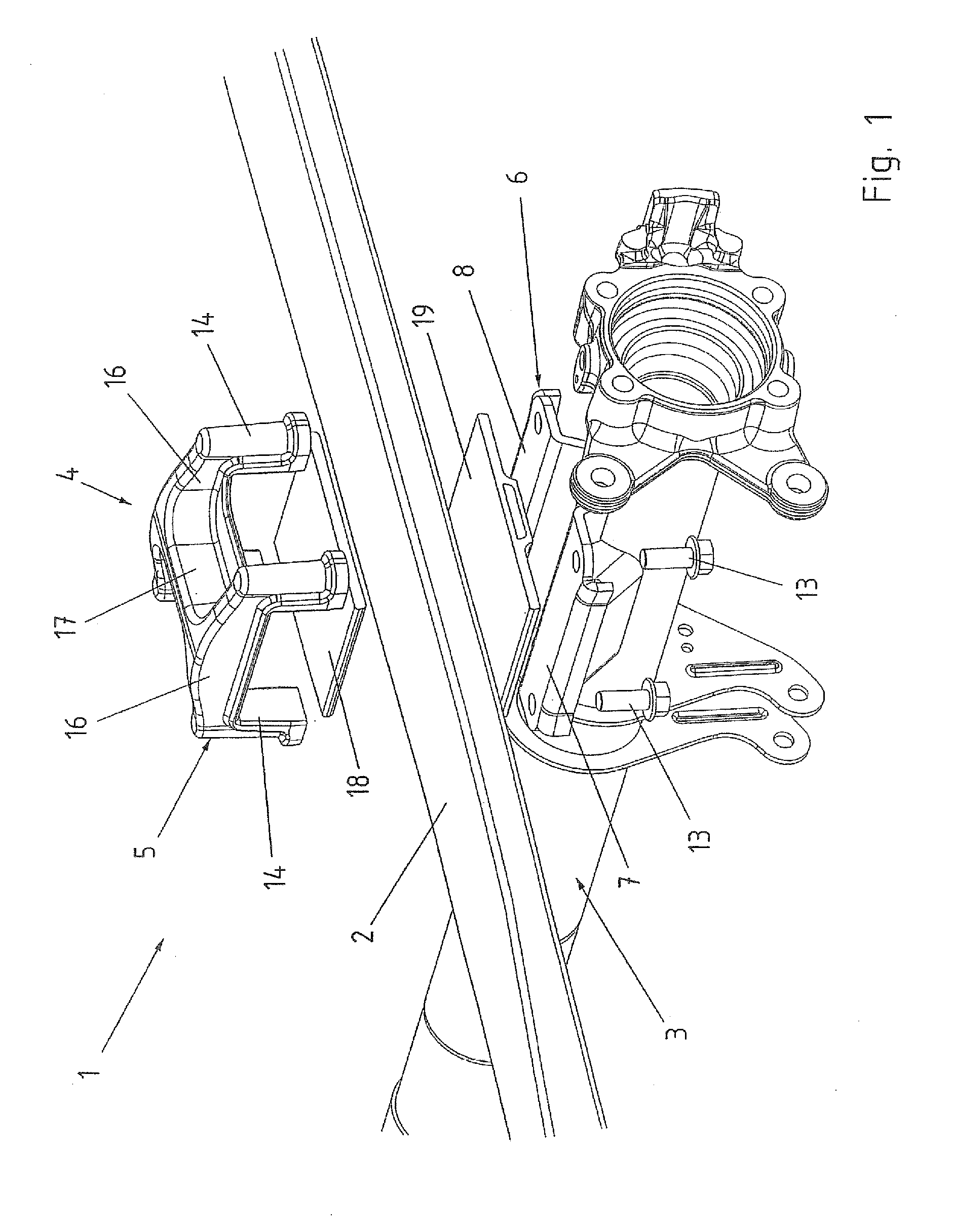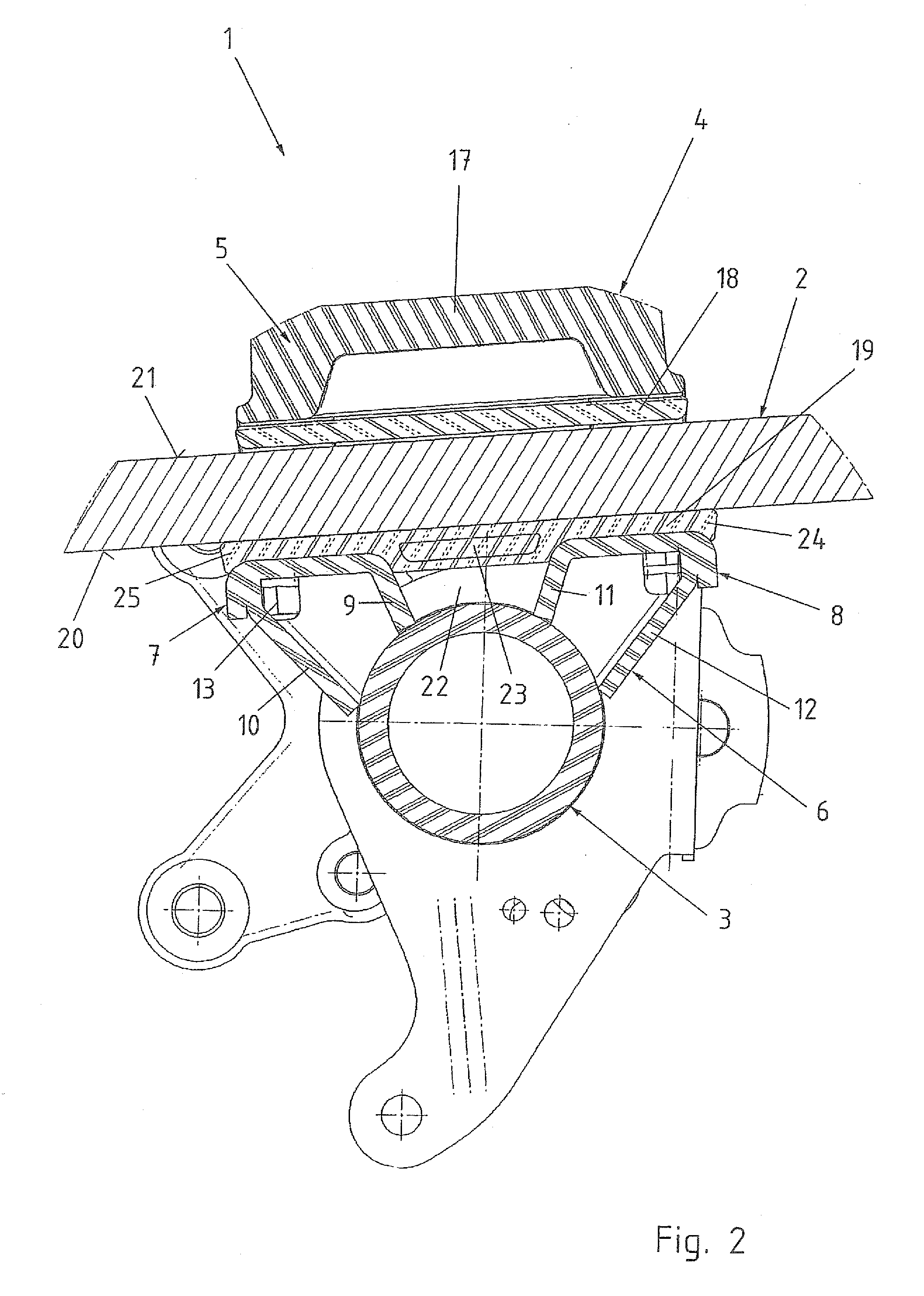Leaf spring attachment
a technology of leaf springs and bolts, which is applied in the direction of resilient suspensions, vehicle springs, pivoted suspension arms, etc., can solve the problems of unwanted weakening of the cross section the relative length of the screw bolt or the tensioning clamp, and the general pressure on the surface of the leaf spring, so as to improve the positioning of the elastomer body, easy assembly and disassembly, and easy replacement during repair. , the effect o
- Summary
- Abstract
- Description
- Claims
- Application Information
AI Technical Summary
Benefits of technology
Problems solved by technology
Method used
Image
Examples
Embodiment Construction
[0026]Throughout all the figures, same or corresponding elements may generally be indicated by same reference numerals. These depicted embodiments are to be understood as illustrative of the invention and not as limiting in any way. It should also be understood that the figures are not necessarily to scale and that the embodiments are sometimes illustrated by graphic symbols, phantom lines, diagrammatic representations and fragmentary views. In certain instances, details which are not necessary for an understanding of the present invention or which render other details difficult to perceive may have been omitted.
[0027]Turning now to the drawing, and in particular to FIG. 1, there is shown an exploded view of a leaf spring attachment according to the present invention, generally designated by reference numeral 1, for fixing a leaf spring 2 to a tubular axle 3 of a (not shown) chassis of a motor vehicle. In the example shown here, the leaf spring 2 is made of a glass fiber reinforced ...
PUM
 Login to View More
Login to View More Abstract
Description
Claims
Application Information
 Login to View More
Login to View More - R&D
- Intellectual Property
- Life Sciences
- Materials
- Tech Scout
- Unparalleled Data Quality
- Higher Quality Content
- 60% Fewer Hallucinations
Browse by: Latest US Patents, China's latest patents, Technical Efficacy Thesaurus, Application Domain, Technology Topic, Popular Technical Reports.
© 2025 PatSnap. All rights reserved.Legal|Privacy policy|Modern Slavery Act Transparency Statement|Sitemap|About US| Contact US: help@patsnap.com



